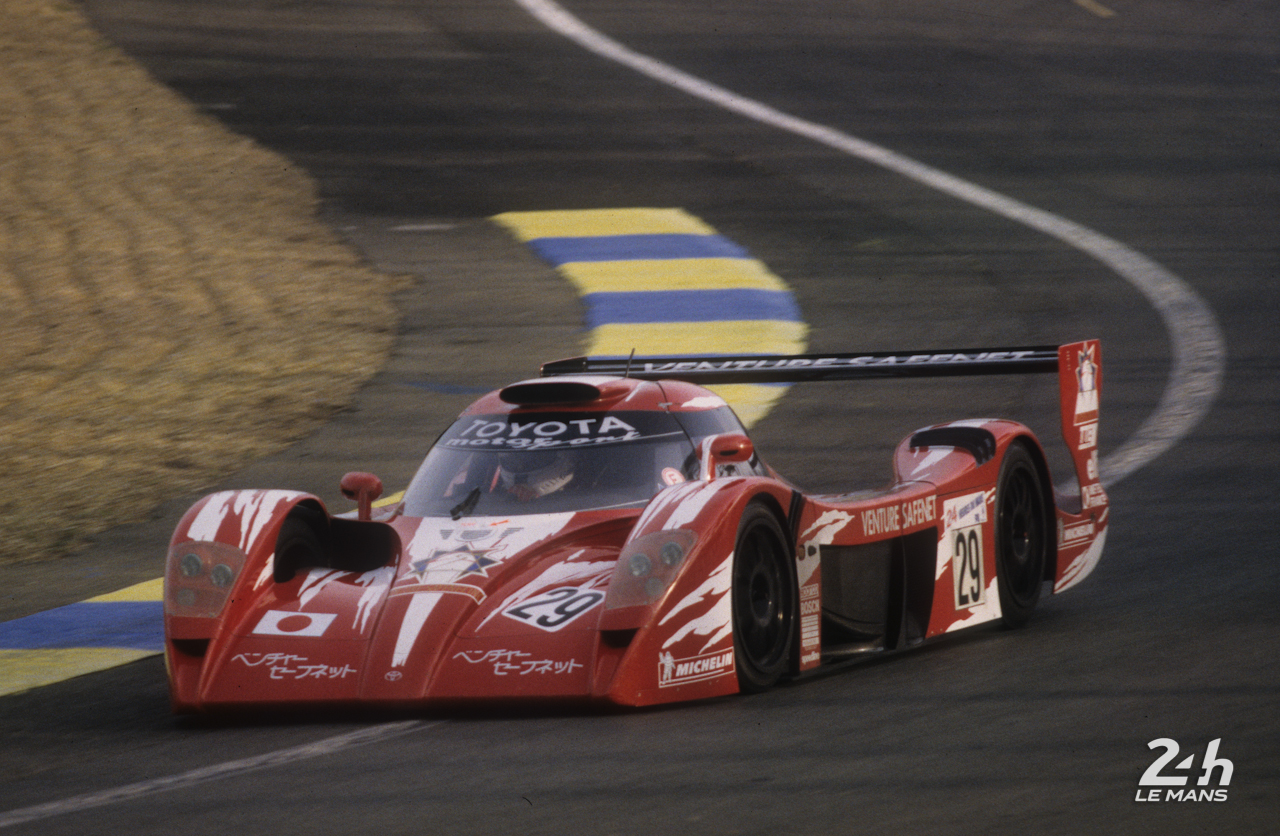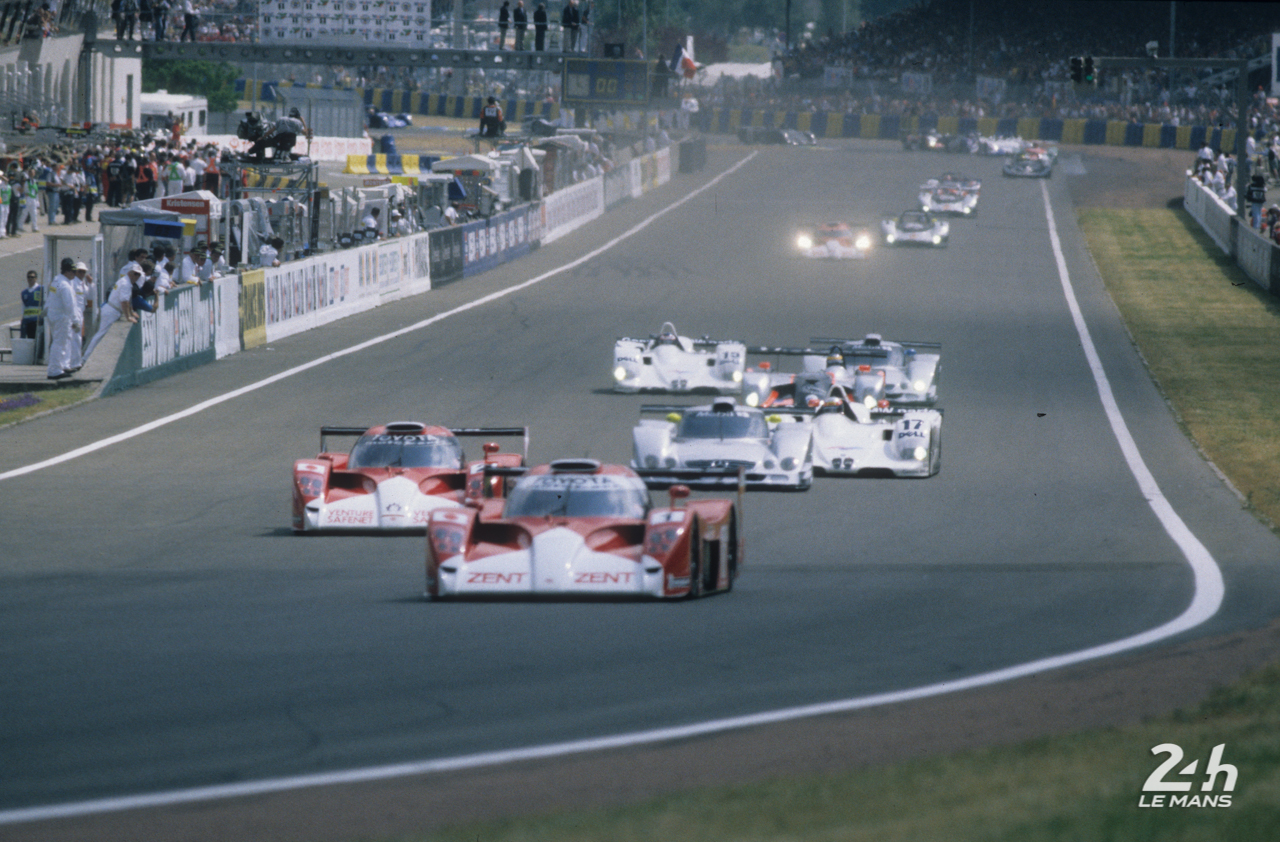The 6 Hours of Fuji, second round of season 8 of the FIA World Endurance Championship, is next weekend. This series focuses on Toyota at the 24 Hours of Le Mans, currently the winningest Japanese marque after its second victory this past June. This second installment is a look back at the GT-One, one of Toyota's most legendary prototypes of the last two decades.
It only took the Toyota GT-One two participations to make an indelible mark on the 24 Hours of Le Mans. Powered by a 3.6-liter V8 twin-turbo engine, the car was a work of art designed by André de Cortanze. A former Alpine driver with two top 10 finishes at the race (10th in 1967 and eighth in 1968), he also lent his talents to the two-time winning Peugeot 905 (1992 and 1993).
As required by the GT1 class regulations at the time, the Toyota GT-One was first produced as a road model. Two versions were built, with one currently on display in Cologne, Germany at the Toyota Motorsport headquarters. TOYOTA GAZOO Racing Senior General Manager Chassis Pascal Vasselon: "It's a beautiful car and a pleasure for me to walk past every day in our company. I had the honour of meeting André de Cortanze recently when he visited our factory and it was fascinating to discuss with him the challenges of the Le Mans regulations of that time and how he addressed them. I think anyone who has a passion for endurance racing is fascinated by this car."
PHOTO ABOVE (Copyright - ACO/ARCHIVES): LE MANS (SARTHE, FRANCE), 24 HOURS OF LE MANS, JUNE 1999. The Toyota team and its three GT-Ones.
At the 1998 edition of the 24 Hours of Le Mans, the GT-One entered into a lengthy battle with the Porsche 911 GT1. The #28 Toyota of Martin Brundle-Emmanuel Collard-Eric Hélary held the lead for the first three hours of the race before the #29 of Thierry Boutsen-Ralf Kelleners-Geoff Lees, leading since dawn on Sunday, was forced to retire with gearbox troubles just 90 minutes from the chequered flag.
The following year, the GT-One shared by Brundle, Collard and Italian driver Vincenzo Sospiri took the start in pole position. However, in a repeat of the previous year, that GT-One was forced to retire and the race also came to an end for the car driven by Boutsen-Kelleners-McNish after a violent incident.
PHOTO ABOVE (Copyright - ACO/ARCHIVES): LE MANS (SARTHE, FRANCE), CIRCUIT DES 24 HEURES, 24 HOURS OF LE MANS, SATURDAY 12 & SUNDAY 13 JUNE 1999. The Toyota GT-One shared by Thierry Boutsen, Ralf Kelleners and Geoff Lees.
At the end of both of those runnings of Le Mans, the third GT-One of the Japanese driver line-up was the only one to make it to the finish line. Ukyo Katayama, Toshio Suzuki and Keiichi Tsuchiya finished ninth in 1998 and second in 1999.
Martin Brundle, winner in 1990 with Jaguar and pole-sitter at the wheel of the GT-One in 1999: "How we didn’t win Le Mans in ’98 or ’99, I’ll never know, but that race can be so cruel, so often. From the moment I sat in the mock-up of the chassis in the Cologne factory, I knew this was going to be a very special racing car, and it looks even more special today." Fascination with the Toyota GT-One has never waned. It was essentially a hypercar ahead of its time, much like the Porsche 911 GT1 and Mercedes CLR, the GT-One's great rivals at the 1998 and 1999 24 Hours.
PHOTO ABOVE (Copyright - ACO/ARCHIVES): LE MANS (SARTHE, FRANCE), CIRCUIT DES 24 HEURES, 24 HOURS OF LE MANS, SATURDAY 12 & SUNDAY 13 JUNE 1999. The Toyota GT-Ones monopolised the first row on the starting grid at the 67th running of the 24 Hours of Le Mans, with the #1 of Brundle-Collard-Sospiri in pole position ahead of the #2 of Boutsen-Kelleners-McNish.



